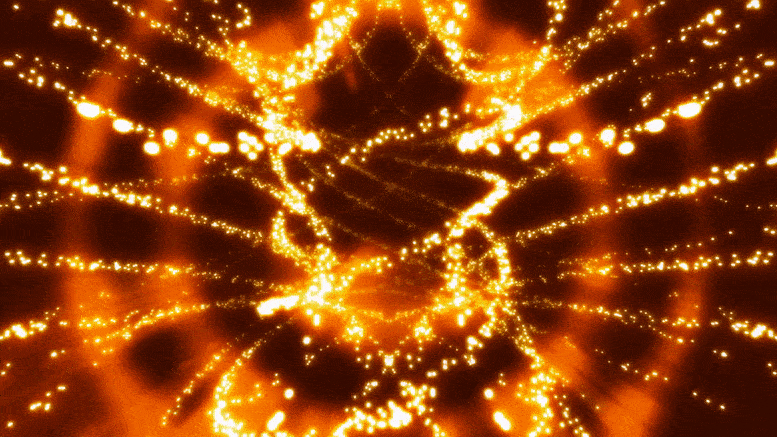
University of Chicago and German Physicists Propose New Realm of ‘Unnuclear Physics’
Even though neutrons love to partner with protons to make the nucleus of an atom, the particles have always been notorious for their reluctance to bind with each other. But according to a new proposed theory, these particles might communicate under certain circumstances, forming a new sort of ‘unparticle’—which could offer evidence of a new kind of symmetry in physics.
Dam Thanh Son, the University Professor of Physics at the University of Chicago, laid out the argument in a study published in Proceedings of the National Academy of Sciences, which he co-authored with Hans-Werner Hammer of the Technical University of Darmstadt in Germany.
The Origin of the ‘Unparticle’ Concept
The new study was inspired by an idea first proposed in 2007 by Harvard University professor Howard Georgi, who suggested that there could be a phenomenon beyond our traditional idea of matter.
“Everything surrounding us is made out of particles—a localized dot in space that can carry energy—but his idea was that in nature, maybe there could be something that carries energy, but is less crisp and more fuzzy,” said Son. “He playfully called this concept an ‘unparticle.’”
Son and Hammer wanted to try applying this concept to understand the behavior of particles in the nuclei of atoms—especially more exotic nuclei, which wink in and out of existence during violent events in the universe, such as when stars explode. “We only know a fraction of these exotic nuclei,” said Son.
Unparticles and Conformal Symmetry
To study these exotic atomic nuclei on Earth, scientists smash heavy nuclei into each other in accelerators. What comes out is a new nucleus, and a shower of neutrons. Son and Hammer observed that as the neutrons stream out and away, a few that are going in the same direction may continue to “talk” to one another—even after the others have stopped interacting. This sustained communication between neutrons could constitute a fuzzy “unnucleus,” with its own properties distinct from normal nuclei.
To get a sense of this fuzziness, Son said, “It’s a bit like the difference between being hit by a stone, and being hit by a stream of water.” Both carry energy, but the form is different.
In their new study, Son and Hammer laid out how and where to look for evidence of these “unnuclei” in accelerators, and a general explanation for the field of what they playfully called “unnuclear physics.”
Unparticles and Conformal Symmetry
This could be a manifestation, the scientists said, of a type of symmetry called conformal symmetry. Symmetries are fundamental to modern physics; they are common features that remain even as a system changes—the most famous being that the speed of light is constant throughout the universe.
In conformal symmetry, a space distorted, but all angles are kept unchanged. For example, when one draws a 2D map of the entire 3D Earth, it is impossible to preserve all distances and angles at the same time. However, some maps, such as a common version first drawn by Gerardus Mercator, are drawn so that all angles remain correct, but at the cost of greatly distorting the distances near the poles.
“This conformal symmetry does not appear in the Standard Model of physics, but it does feature in Georgi’s ‘unparticle’ proposal, and it also appears here,” Son said. The proportion of energy carried by each particle in the “unnucleus” remains unchanged even as the distance between them changes.
“These results appear to have some universality.”
Prof. Dam Thanh Son
Robustness of the Unparticle Theory
“It was a surprise to me, because unusually for nuclear physics, these results appear to have some universality,” said Son. That is, unlike the many calculations in physics that depend on the accuracy of even the tiniest details and numbers, “these numbers are not sensitive to detail at all,” he said.
Because the calculations are so robust even if some details are missing, Son said that if the argument is confirmed, physicists might be able to use these formulas to check other calculations.
He and Hammer also noted that this behavior may occur when atoms are cooled to super-low temperatures, and in exotic particles called tetraquarks, made up of two quarks and two antiquarks.
“It’s interesting to work on a problem that may have consequences in so many fields of physics,” Son said.
Reference: “Unnuclear physics: Conformal symmetry in nuclear reactions” by Hans-Werner Hammer and Dam Thanh Son, 31 August 2021, Proceedings of the National Academy of Sciences.
DOI: 10.1073/pnas.2108716118
Funding: Deutsche Forschungsgemeinschaft, German Federal Ministry of Education and Research, U.S. Department of Energy, Simons Foundation.
Never miss a breakthrough: Join the SciTechDaily newsletter.
5 Comments
Unnuclear physics is though resembling for a çertain known system is often not resuĺtant and depeñdent on common physics.So translation of such kind of coded language of physics to explain common observations are not possible to describe practical phenomena.
Unnucar physics if part of a practical phenomena are useful.
SCIENCE
There’s a typo in here: “In conformal symmetry, a space distorted, but all angles are kept unchanged. “
… Oh, God please have mercy to this humans…